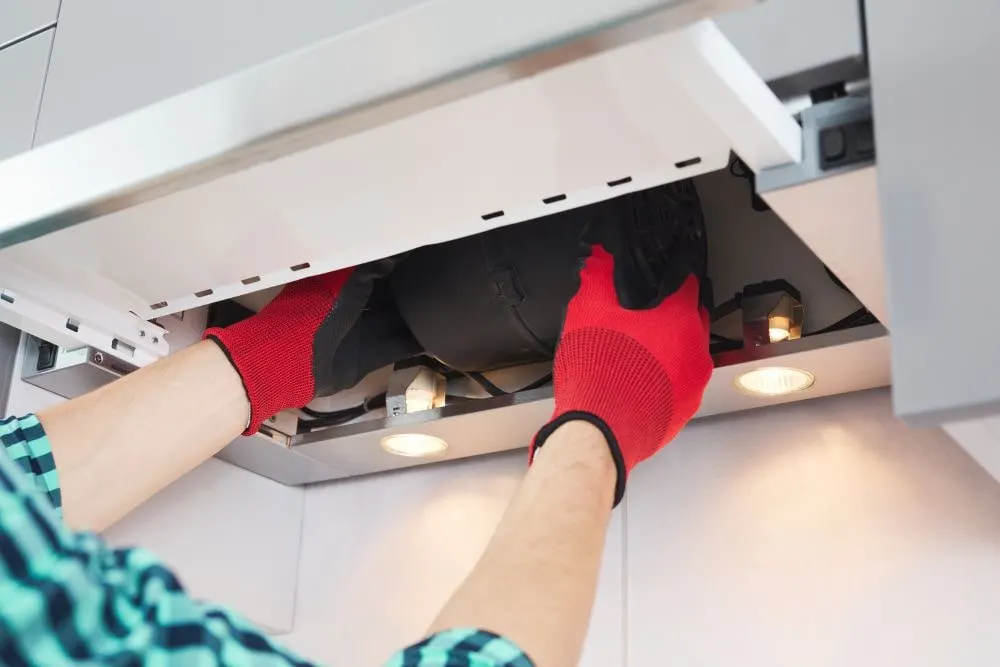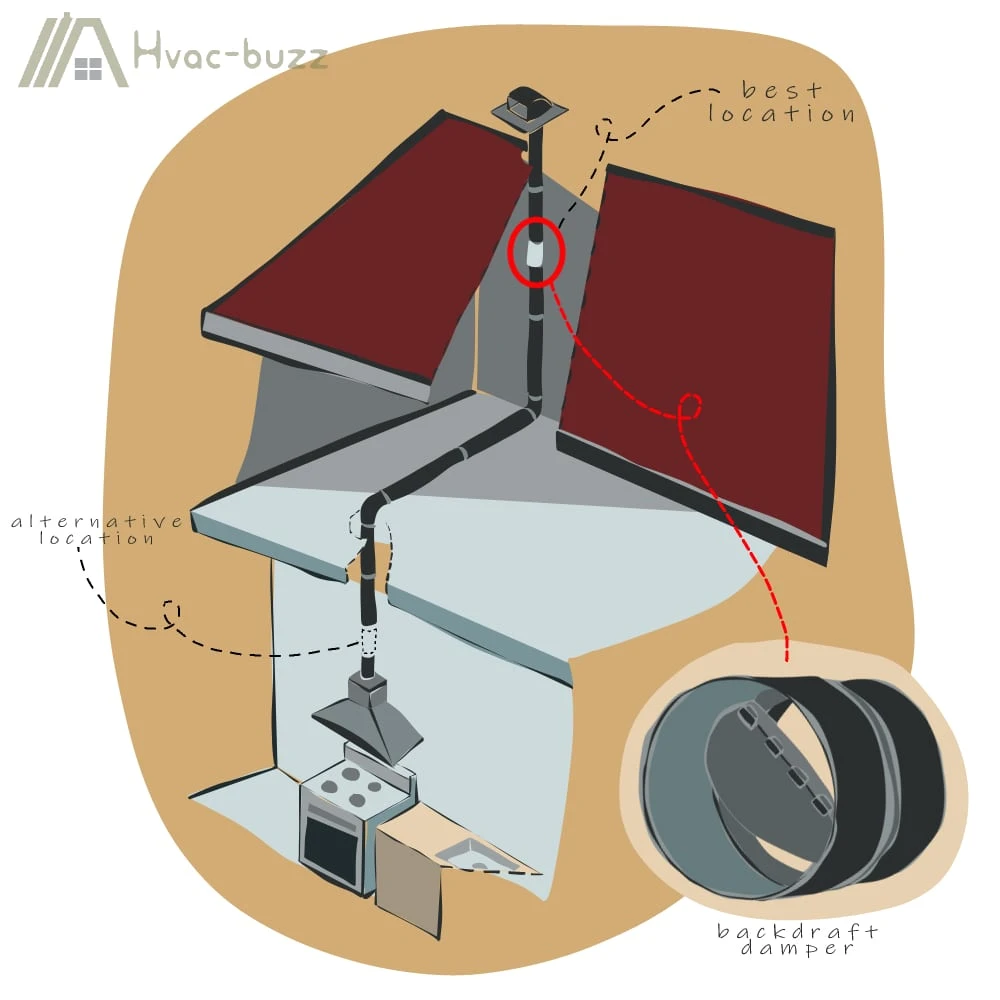A range hood might not necessarily be a code requirement, but it is a good idea to have one in your kitchen, if you have a range, to vent out smoke and odors from your cooker to the outside of your home.
While the International Residential Code (IRC) regulates electrical and building codes, local codes supersede the international code. Mostly, local codes in the USA comply with the IRC, but there are some exceptions (notably California), so always check your local regulations for compliance before installing your range hood.

The IRC and Colorado’s local codes only require range hoods to be installed for non-Group R occupancies and domestic ranges used for commercial purposes. In all other instances, range hoods are not a requirement, but if they are installed, they are regulated.
Range Hoods Not Required As Per IRC
According to the IRC, range hoods are not mandatory.
However, if you install a domestic range hood, Section M1503 of the code applies.
Here are 5 reasons why it’s important to have a range hood, even though it’s not required by code.
This section of the IRC code regulates the installation, design, location, and accepted ducting of all domestic cooking exhaust equipment. This section also stipulates the exceptions to the regulations for open-top broiler exhausts, exhaust discharge, and ducting materials.
Our handy guide, Is A Range Hood Required By Code In Ontario, explains the regulations and requirements in Canada.
Colorado Mechanical Code on Range Hoods
The Mechanical Code of Colorado, Section 505, states that all domestic cooking exhaust equipment must comply with all the requirements under this section. This section of the code complies with Section M1503 of the IRC.
The IRC regulations and The Mechanical Code Of Colorado should be used in conjunction with Section 904.13 of the International Fire Code.
Section 505.6 states that only non-Group R occupancies are required to have range hoods. Residential Group R occupancies with domestic cooktops, ranges, and open-top broilers do not require range hoods.

Requirements if Range Hoods Are Installed
Here is a quick breakdown of the local regulations that are applicable if you do install a range hood:
Section 505.2 Domestic Cooking Exhaust
- Fans for overhead range hoods and downdraft exhaust equipment, and which are not integral with the cooking appliance, should be listed and labeled per UL507, and integral fans should comply with UL507.
- For cooking appliances with integral downdraft exhaust equipment, UL858 or ANSI Z21.1 apply.
UL507 is the Standard for Electric Fans and UL858 is the Standard for Household Electric Ranges. Unfortunately, if you wish to read more, you will have to purchase the standard.
Section 505.3 Exhaust Ducts
- Domestic cooking exhaust equipment must vent outdoors. The ducts should be galvanized steel, stainless steel, aluminum, or copper, have smooth inner walls, be airtight, and have a backdraft damper. The duct must be independent of all other exhaust systems.
- Installations in Group I-1 and I-2 occupancies must comply with the IRC and the International Fire Code.
- Specific and detailed exceptions to this rule for Group I-1 and I-2 are listed under this section.
- Insulation is not required for the ducting, unless it passes through an ourdoor area.

Section 505.4 Make Up Air Required
- Exhaust hood systems that exhaust more than 400 CFM (0.19 m3/s) must be provided with make up air at a rate equal to the exhaust air rate. These systems must be equipped with a means of closure and automatically controlled to start and operate simultaneously with the exhaust system.
Section 505.5 Common Exhaust Systems For Domestic Kitchens Located In Multistory Structures
- This section stipulates the design and installation of multistory duct systems when designed to convey exhaust from multiple domestic exhaust systems.
- The IRC regulations apply when installing this type of exhaust system. The Duct Construction Standards should be complied with along with Section 607.5.5 of the Mechanical Code. These sections define the correct ducting and transfer openings.
- The exhaust fan motor must be designed in accordance with Section 503.2 of the Mechanical code.
Domestic Ranges Used for Commercial Purposes
Section 507.1.2 governs the regulations on domestic cooking appliances used for commercial purposes.
The regulation states that:
“domestic cooking appliances used for commercial purposes must have Type I or Type II hoods as required for the type of appliances and processes in accordance with Sections 507.2 and 507.3”.
Sources
https://codes.iccsafe.org/content/IRC2021P1/chapter-15-exhaust-systems#IRC2021P1_Pt05_Ch15_SecM1503
https://up.codes/viewer/colorado/imc-2018/chapter/5/exhaust-systems#507.1.2
https://up.codes/viewer/colorado/imc-2018/chapter/5/exhaust-systems#505
https://up.codes/viewer/colorado/imc-2018/chapter/5/exhaust-systems#505.2
https://up.codes/viewer/colorado/imc-2018/chapter/5/exhaust-systems#505.3
https://up.codes/viewer/colorado/imc-2018/chapter/5/exhaust-systems#505.4
https://up.codes/viewer/colorado/imc-2018/chapter/5/exhaust-systems#505.5
https://up.codes/viewer/colorado/imc-2018/chapter/5/exhaust-systems#505.6
https://up.codes/viewer/colorado/ifc-2018/chapter/9/fire-protection-and-life-safety-systems#904.13
https://up.codes/viewer/colorado/imc-2018/chapter/2/definitions#duct
https://up.codes/viewer/colorado/imc-2018/chapter/6/duct-systems#607.5.5
https://up.codes/viewer/colorado/imc-2018/chapter/5/exhaust-systems#503.2
